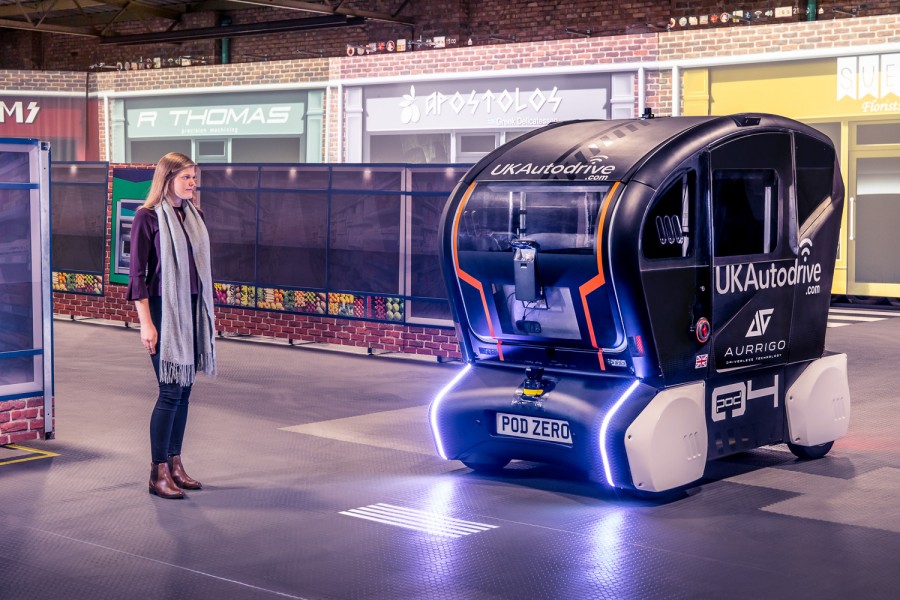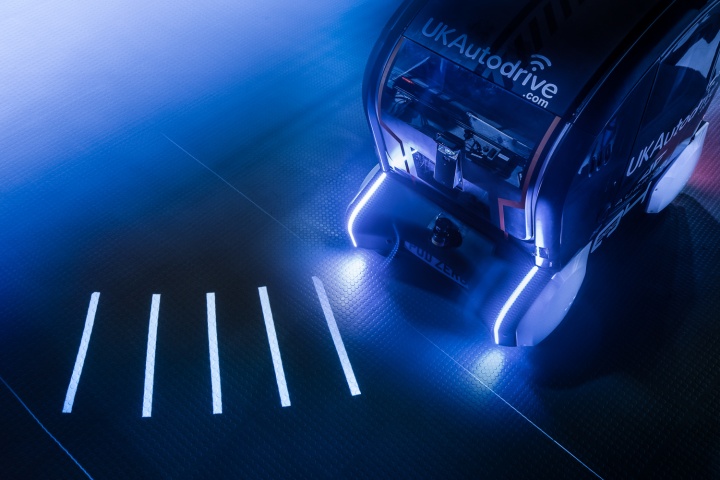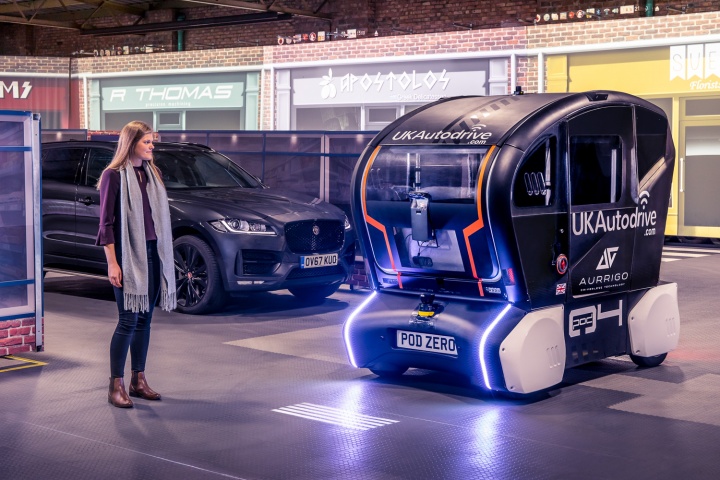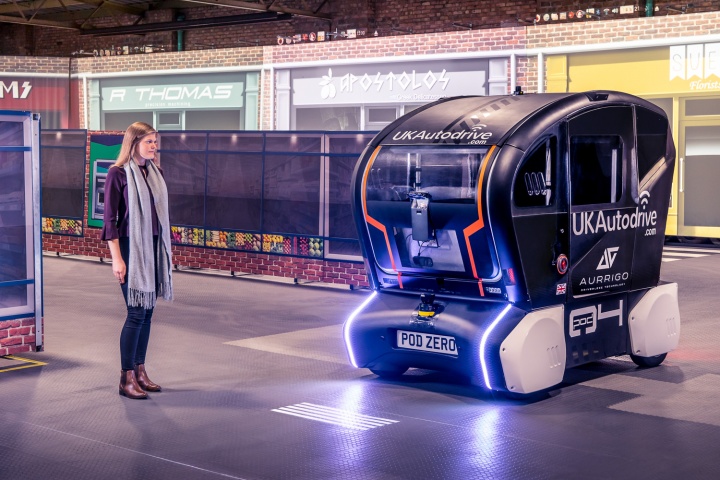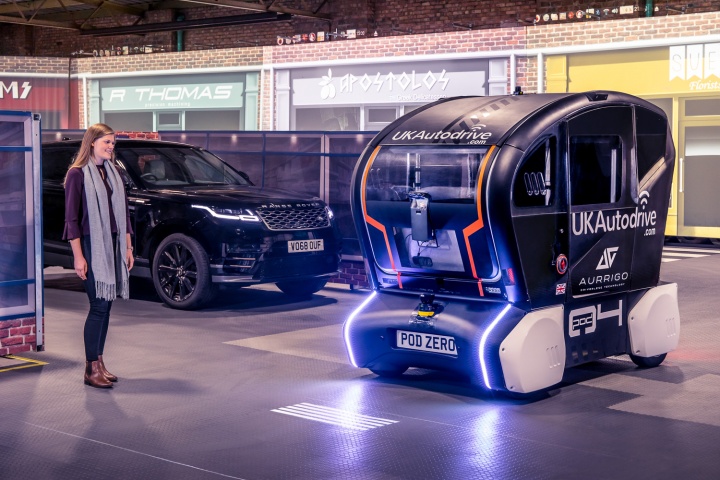What's the news?
In spite of its recent financial travails, Jaguar Land Rover is pushing ahead with its research into autonomous and robotic cars. The UK-based car maker has now developed a system which literally lights up the road in front with an image of where it intends to steer next, as a way of letting pedestrians know what it's up to.
JLR is fitting this tech to the same autonomous prototype 'pod' vehicle to which it previously attached a set of creepy-hilarious googly eyes. Eye contact is reckoned to be a useful way of getting robot cars to interact with other street users (pedestrians, cyclists) and lets people know when a car has detected and made note of their presence.
The new projections system beams a series of parallel lines onto the road in front of the car. If the lines get closer together, that means that the car is slowing down, and as it comes to a stop, all those individual lines compress into a single bar. As the car starts to accelerate again, the lines start to open out once more.
The reason behind all of this? JLR's research indicates that 41 per cent of drivers and pedestrians are worried about sharing the road with autonomous vehicles, and the bar projection - and the weird googly eyes - are ways to get robotic vehicles making direct, non-verbal contact with other road users, so that everyone feels, and is, safer.
Pete Bennett, Future Mobility Research Manager at Jaguar Land Rover, said: "The trials are about understanding how much information a self-driving vehicle should share with a pedestrian to gain their trust. Just like any new technology, humans have to learn to trust it, and when it comes to autonomous vehicles, pedestrians must have confidence they can cross the road safely. This pioneering research is forming the basis of ongoing development into how self-driving cars will interact with people in the future."

